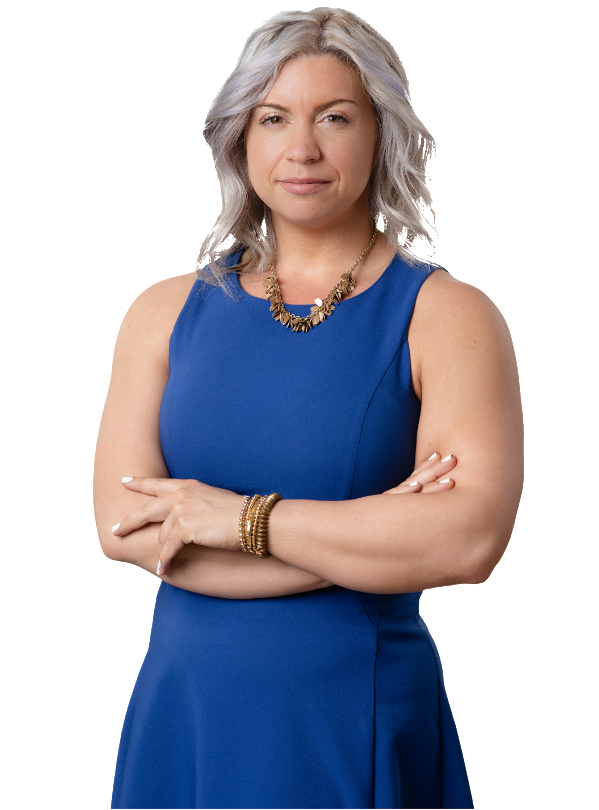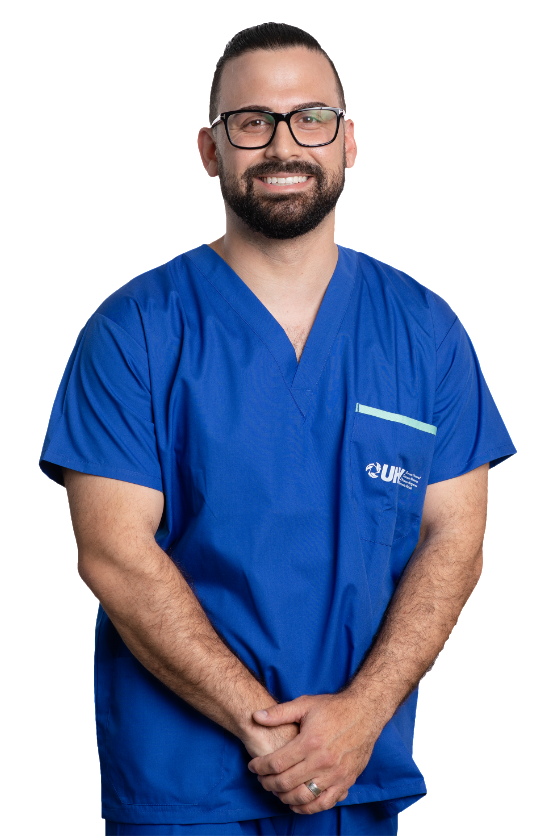Using advanced 3D imaging and mixed-reality tools, Sprott Surgery is improving the outcomes for patients who need shoulder replacements. (Photo: Roberto Caruso)
By Nancy Mann Jackson
When a patient has a poor outcome from a shoulder replacement surgery, the reason can be traced back to surgical planning. Why? Because preoperative planning allows surgeons to anticipate and troubleshoot challenges, lessening the risk for error and increasing the likelihood of achieving the implant position and patient outcome everyone was hoping for, says Dr. Timothy Leroux, an orthopedic surgeon in the Sprott Department of Surgery.
A common goal of shoulder replacement surgery is to reconstruct the joint “the way it originally looked, before arthritis caused deformity,” he explains. However, this is easier said than done. Historically, planning for shoulder replacement surgery was based on 2D X-ray images. But shoulder deformity is a complicated 3D problem, making a 2D image inadequate to inform and guide the surgeon. For this reason, surgeons have shifted to using computerized tomography (CT) scans, which combine X-rays from different angles to create cross-sectional 3D images of the arthritic shoulder.

The next level of imaging
Over the past five years, Dr. Leroux has worked collaboratively with the Joint Department of Medical Imaging at University Health Network (UHN) to standardize the use of CT scans to help improve the reconstruction and replacement of arthritic shoulder joints. Compared to 2D X-ray images, evidence suggests that 3D scans improve a surgeon’s understanding of deformity and result in more reliable positioning of the implant during surgery. Now, surgeons like Dr. Leroux combine these 3D images with software that enables them to virtually operate before ever entering the operating room (OR).
“With the software you can anticipate and solve problems, optimize implant position, consider different styles of implants and even assess range of motion before taking knife to skin,” says Dr. Leroux, who is also part of the Schroeder Arthritis Institute at UHN. While this technology is increasingly common, there is still room for error – a real shoulder is covered with muscle and other soft tissue, making it harder to find the spot on the bone that was so easy to see virtually.
To overcome this challenge, surgeons have used different strategies ranging from 3D printed shoulder models to customized guides for placing their implants in the ideal position. Unfortunately, these strategies are cumbersome and expensive, limiting their use.
With the arrival of mixed-reality, which combines virtual and actual reality, surgeons are considering ways to incorporate this technology into the OR to improve patient outcomes. Dr. Leroux is part of an international group working to translate virtual 3D plans into real-world shoulder replacement surgeries in a reliable, cost-effective and interactive way.
As part of this initiative, Dr. Leroux goes into shoulder replacement surgery wearing a HoloLens, a pair of smart glasses developed by Microsoft. This allows him to be in a mixed-reality environment where he can replace a shoulder in the real world while also interacting with his virtual 3D surgical plan, which is simultaneously in his field of view. “I’m able to make informed decisions in advance and easily act on them because of the planning technology and HoloLens,” Dr. Leroux explains. While the technology is still new, the project’s goal is for surgeons to plan their surgery in a virtual OR, load that plan into the headset and then use it to help guide placement of their implants without additional equipment or instruments.

A team approach
Dr. Leroux performs about 100 shoulder replacements each year, but a successful surgery is always a team effort, he says. Modernizing the approach to shoulder replacements required buy-in and ongoing support from nurses, the CT department and OR implant specialists.
CT scans used for shoulder replacement planning are slightly different from regular scans, so Dr. Leroux needed help educating CT technologists and ensuring each scan was done correctly.
Joanna Talotta, Supervisor of CT Scan and General Radiography in the Joint Department of Medical Imaging at UHN, worked to train technologists on the process. “Once the first case was successful, we then had a blueprint. Now all patients receive a scan protocol,” Talotta explains. “From an imaging perspective, patients are being better assessed for their procedures. The images have better spatial resolution and doctors can interact with these CT scans using 3D surgical planning software, so there’s less likelihood for mistakes.”
“Joanna has been instrumental in the smooth transition from using X-rays to CT scans,” Dr. Leroux adds. “A scan order for a shoulder surgery is no longer questioned, and through her tireless efforts these scans are all done right the first time. We have come a long way because of her.”

Chris Alissandratos, OR implant specialist in the Division of Orthopedic Surgery within the Sprott Department of Surgery, meets regularly with Dr. Leroux to discuss his cases, ensuring he has the necessary equipment and instruments for each shoulder replacement surgery. He’s been critical to bringing in all the new technology Dr. Leroux has been using, including patient-specific guides and custom implants to the HoloLens technology. “The implants have changed – in the materials used to manufacture them, the packaging and the geometry,” says Alissandratos. “The HoloLens assists surgeons in performing complex cases with pinpoint accuracy while making adjustments intra-operatively. Dr. Leroux and I work close together to make sure everything is ready for the patient’s surgery.”
“At UHN, many people behind the scenes have been crucial in helping us become thought leaders in shoulder replacement surgery,” says Dr. Leroux. Thanks to their contributions, Sprott Surgery’s patients can benefit from tomorrow’s surgical tools today.
Read more in the Sprott Department of Surgery magazine.
